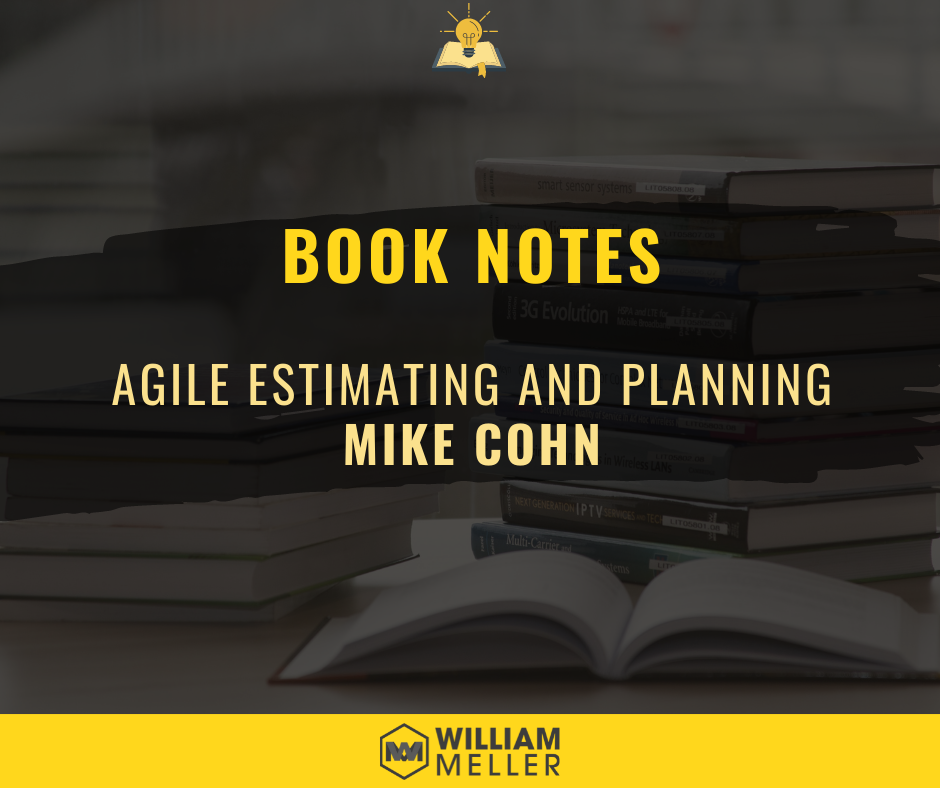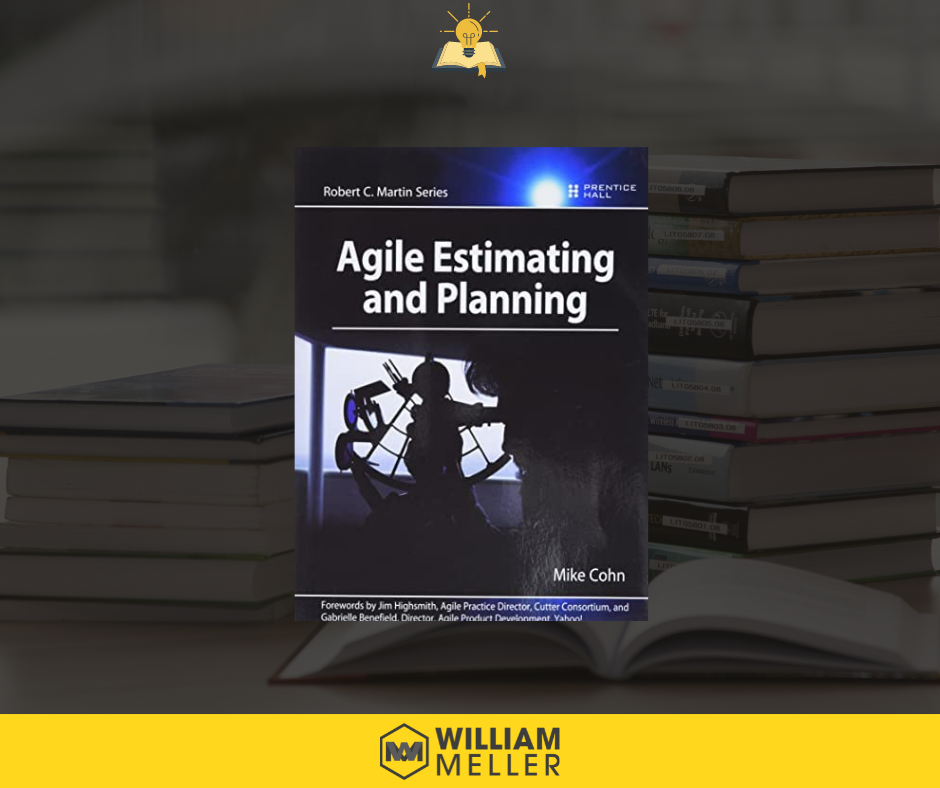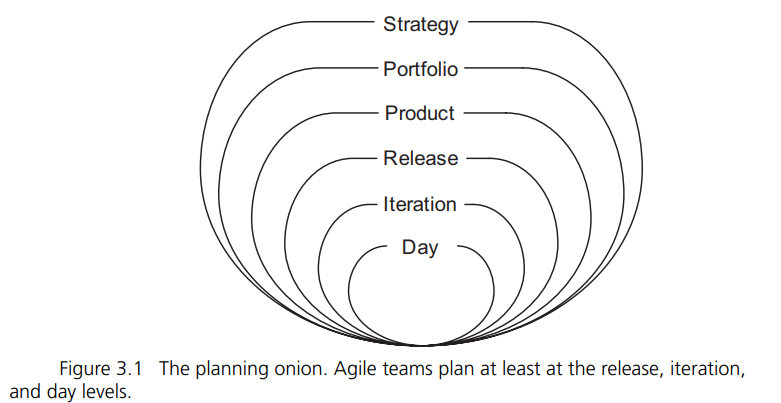
Agile Estimating and Planning is the definitive, practical guide to estimating and planning agile projects with the philosophy of agile that shows you exactly how to get the job done.
Summary
Title: Agile Estimating and Planning
Author: Mike Cohn
Themes: Agile, Career, Cases, Technology, Management, Business
Year: 2005
Publisher: Pearson Education
ISBN: 0132703106, 9780132703109
Pages: 368
Agile Estimating and Planning is the definitive, practical guide to estimating and planning agile projects.
In this book, Agile Alliance cofounder Mike Cohn discusses the philosophy of agile estimating and planning and shows you exactly how to get the job done, with real-world examples and case studies.
Concepts are clearly illustrated and readers are guided, step by step, toward how to answer the following questions: What will we build? How big will it be? When must it be done? How much can I really complete by then? You will first learn what makes a good plan and then what makes it agile.
Mike Cohn tries to answer questions like why conventional prescriptive planning fails and why agile planning works?
How to estimate feature size using story points and ideal days–and when to use each? How and when to re-estimate?
How do prioritize features using both financial and nonfinancial approaches?
How do split large features into smaller, more manageable ones?
How to plan iterations and predict your team's initial rate of progress?
How do schedule projects that have unusually high uncertainty or schedule-related risk?
How to estimate projects that will be worked on by multiple teams?

Agile Estimating and Planning supports any agile or iterative process, including Scrum, XP, Feature-Driven Development, Crystal, Adaptive Software Development, DSDM, Unified Process, and many more.
To improve estimation according to the book, Agile Estimating, and Planning, teams should focus on understanding the basics of Agile project management, such as the principles of Agile planning, the importance of estimating, and the techniques used to create reliable estimates.
Additionally, teams should utilize various tools and techniques for tracking progress, such as burn-down charts, velocity charts, and cumulative flow diagrams.
Lastly, effective risk management should be practiced to identify and mitigate potential issues.
By applying the best practices outlined in the book, teams can quickly improve their ability to plan, estimate, and manage any project.

A key concern in agile estimation is to separate the estimation of size and the measuring of velocity.
In separating these concerns, you can achieve an unbiased view of the size of a project and afterward assess the ability to achieve commitments or a schedule.
My Book Highlights:
"... The best way of dealing with uncertainty is to iterate. To reduce uncertainty about what the product should be, work in short iterations, and show (or, ideally, give) working software to users every few weeks..."
"... A good plan is one that stakeholders find sufficiently reliable that they can use as the basis for making decisions..."
"... A key tenet of agile estimating and planning is that we estimate size but derive duration..."
"... Agile teams value individuals and interactions over processes and tools because they know that a well-functioning team of great individuals with mediocre tools will always outperform a dysfunctional team of mediocre individuals with great tools and processes..."
"... We frequently fail to acknowledge and plan for this new knowledge. Failing to plan to acquire new knowledge leads to plans built on the assumption that we know everything necessary to create an accurate plan..."
"... The beauty of this is that estimating in story points completely separates the estimation of effort from the estimation of duration..."
"... For the product owner to have the most flexibility in prioritizing, features must be written so as to minimize the technical dependencies among them..."
"... Don’t split a large story into tasks. Instead, try to find a way to fire a tracer bullet through the story..."
"... Avoid making things worse by adding related changes to an appropriately sized feature unless the related changes are of equivalent priority..."
"... If you tie iterations to the ends of months, one out of every three iterations will coincide with the end of a fiscal quarter..."
"... Because the estimate for each feature is made relative to the estimates for other features, it does not matter if our estimates are correct, a little incorrect, or a lot incorrect. What matters is that they are consistent..."
An estimate is not the same as a commitment. The aim of an estimate is to be as useful and accurate as possible. This means that padding or being optimistic about estimates is counterproductive.
This book is organized into seven parts and twenty-three chapters and the overall idea is to:
- Understand the principles behind Agile project management and how it differs from traditional project management
- Learn how to create reliable estimates, improve accuracy, and avoid common estimation errors
- Master estimating techniques such as Planning Poker and story points
- Utilize various tools and techniques for tracking progress, such as burn-down charts, velocity charts, and cumulative flow diagrams
- Practice effective risk management to identify and mitigate potential issues
In Agile Estimating and Planning, Mike Cohn provides a comprehensive and detailed set of tools and techniques to help any project team achieve success.
By understanding the basics of Agile project management and applying the best practices outlined in the book, teams can quickly improve their ability to plan, estimate, and manage any project.
Chapters of the Book:
Part I: The Problem and the Goal
1. The Purpose of Planning
2. Why Planning Fails
3. An Agile Approach
Part II: Estimating Size
4. Estimating Size with Story Points
5. Estimating in Ideal Days
6. Techniques for Estimating
7. Re-Estimating
8. Choosing Between Story Points and Ideal Days
Part III: Planning for Value
9. Prioritizing Themes
10. Financial Prioritization
11. Prioritizing Desirability
12. Splitting User Stories
Part IV: Planning for Value
13. Release Planning Essentials
14. Iteration Planning
15. Selecting an Iteration Length
16. Estimating Velocity
17. Buffering Plans for Uncertainty
18. Planning the Multiple-Team Project
Part V: Tracking and Communicating
19. Monitoring the Release Plan
20. Monitoring the Iteration Plan
21. Communicating About Plans
Part VI: Why Agile Planning Works
22. Why Agile Planning Works
23. A Case Study: Bomb Shelter Studios
Agile Estimating and Planning is an essential guide for any project team looking to improve their process for estimation and planning.
With detailed instructions and plenty of examples, Mike Cohn provides a comprehensive set of tools and techniques that can be quickly implemented to make any project successful.
By understanding the basics of Agile project management and applying the best practices outlined in the book, teams can quickly improve their processes and reach their goals.
Mike Cohn is one of the contributors to the Scrum software development method. He is one of the founders of the Scrum Alliance.
I am incredibly grateful that you have taken the time to read this post.
Your support and engagement mean the world to me, and I truly appreciate your interest in the topics I write about.
I hope that you have found this post informative, educational and engaging.
If you are interested in reading more of my work, please visit other articles here on the website.
I promise to continue providing valuable and high-quality content for your enjoyment and education.
Thank you again for reading and I hope to see you soon!
Here are some related articles you may enjoy:
There are even more good things I've prepared for you!
Subscribe below or click here to receive new posts in your Email!
Do you want to read some book notes and recommendations? Discover more here!
Do you want to have amazing weekly content curation? Discover more here!
Ready to make a positive impact?
Support my work by sharing my content with your network.
Your simple act of kindness can reach new heights and help spread valuable information.
Want to show your support in a tangible way? A virtual coffee is a small but mighty way to show your appreciation and give me the extra energy to keep crafting valuable content!



